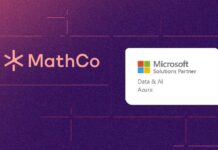By Vijender Yadav
Coronavirus spread is happening unabated across India as in the rest of the world. Worrying financial implications and trends have started to emerge. Large IT/ITeS companies have identified coronavirus victims and have asked employees to WFH. More will follow this.
Enterprises and organizations that can swiftly move technology work capacity to digital platforms will be able to reduce the impact of the pandemic and continue to address their customers almost unhindered. This coronavirus problem has brought forward the risk of putting focus on daily operational needs instead of investing in digital business and long-term adaptability.
Enterprises and their leaderships should take proactive steps now to maintain as much operational continuity as possible. CIOs in particular can immediately look to expand ‘access’ to the organization’s workforce to ensure that they continue to serve customer demand.
CIO’s major concerns with Work From Home
CIO’s major concerns with Work From Home are in form of lack of trust with users’ personal devices, data protection on end user devices, and cost and logistics of provisioning laptops to users. Presence of risks such as malware and keyloggers on end user devices is a common challenge. Provisioning laptops to users to work from home is not only costly and time consuming but also highly logistically complex problem. And to top these issues is the problem of having no real control on the users’ Internet access.
Traditional VPNs do provide secure connectivity but do not solve the endpoint security issues and application management issues on end users’ PCs. The problem of users being able to use any device also persists. End user experience is not good and there are no advanced features like device entry control and data copy protection in traditional VPNs.
At a basic, simple level the first option can be remote access to office PCs through a secure gateway which ensures device entry control, device compliance control and other such organization protocols. But if it is not possible to give remote access to office PCs due to data security issues, then IT managers have to consider higher grade options.
VDI is the Ideal Work From Home Option
The ideal WFH option uses VDI at its core. Users connect from their endpoints to securely access virtual apps or desktops running in data centre. All the work actually happens in datacentre. The CIO is free from the worry about the security readiness of users’ personal device. Endpoint focused VDI solution should take care of work on just about any browser on any device.
5 Benefits of Expanding ‘access’ for the digital workforce
As the virus continues to spread, companies as well as government is encouraging people to avoid unnecessary travel or large gatherings. Enterprises are asking more people to work from home. This is to ensure an increase in social distance, which can limit viral spread.
1. Business Continuity – Keep the workforce productive even in the face of crises, be it power outage, virus outbreak or natural calamity.
2. Increased Productivity – Saved employee time converts into business growth.
3. Costs Effective – Reduced OPEX on office space and maintenance.
4. Empower End User – Provide mobility and flexibility to end user.
5. Enable Diverse Workforce – Anytime, anywhere computing for remote employees.
6 Checks for CIOs to Find a Digital Workspace solution
CIOs need to look for workspace virtualization solution that empowers their workforce to work from home without compromising the security, saving considerable amounts of time & peace of mind during the ongoing pandemic. The right solution needs to enable end users to securely access the corporate infrastructure from any unmanaged devices working at any location. Six key check boxes need to be ticked before finalizing any such solution:
1. Secure Remote Access – Secure remote access with ZERO data trails on end device.
2. Two Factor Authentication – Enable strong MFA with device-based authentication.
3. Device Scans for Compliance – Scan endpoint to check all security compliance.
4. Hassle-Free Endpoint Management – Control over Endpoint with device-based application access.
5. Instant Application Access – Simplified virtual application delivery of business apps.
6. Detailed Audit Logs – Track access patterns with complete reporting of user logons & activity.
Leverage technology to address the challenge on hand
Whether a business experiences unexpected slowdown or risks and lulls during the outbreak of pandemic of such proportions, the CIO needs to ensure IT systems are prepared for them or can adapt to them quickly. Situations like these demand expansions of horizons and adopting agile processes to enable fast shifts of physical and digital resources.
The author of the article is the CEO at Accops Systems Pvt Ltd, India.














